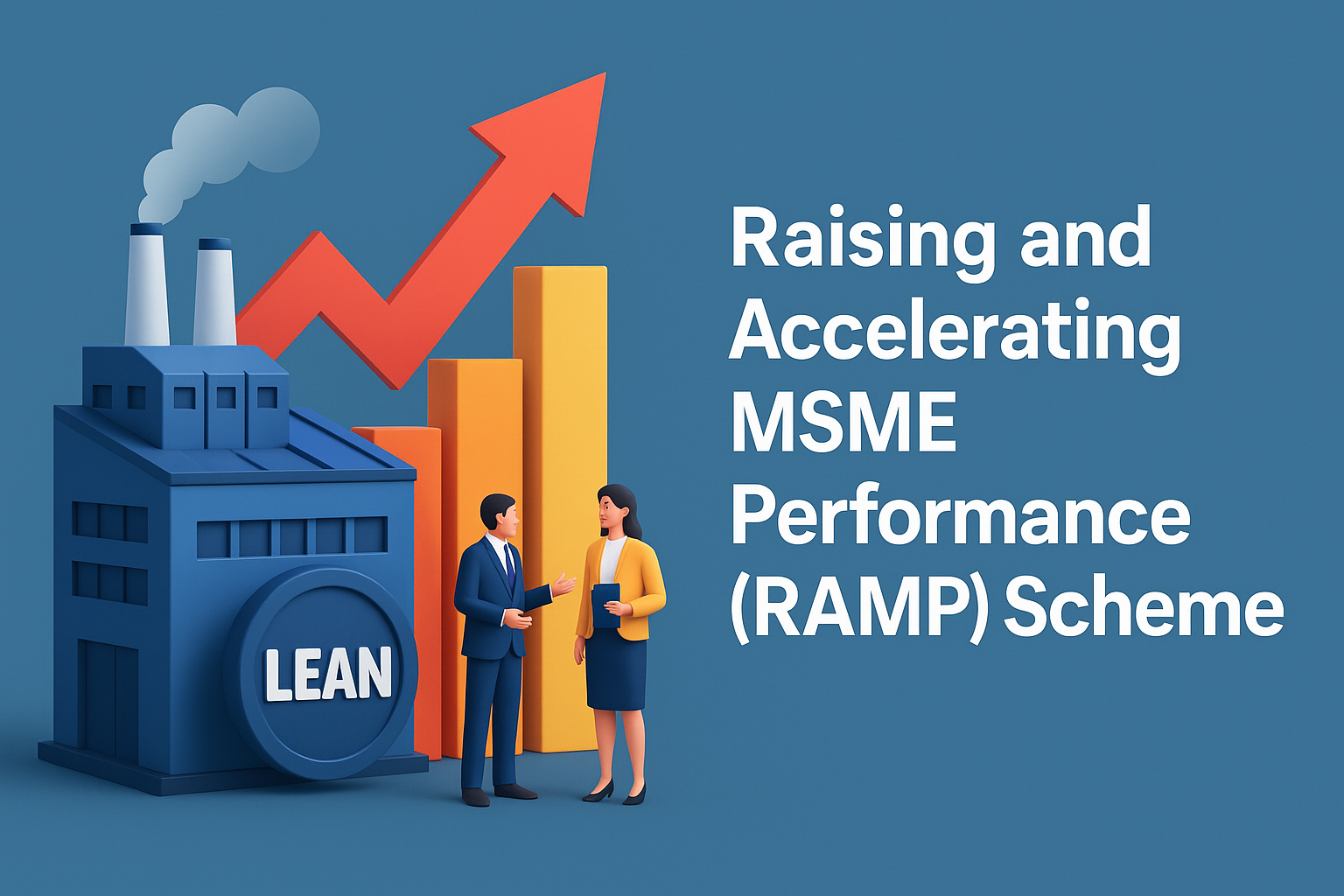Introduction: The 2nd Loan for Upgradation of Existing PMEGP/MUDRA Units is a special scheme under the Ministry of MSME that offers financial assistance to existing businesses that were previously funded under PMEGP, REGP, or MUDRA schemes. If your unit is performing well, has repaid its first loan successfully, and is looking to expand or modernise operations, this scheme could be your next step toward growth.
In this guide, we break down everything you need to know—eligibility, subsidy limits, how to apply, and how Sigma Solutions can help.
Table of Contents
- What is the 2nd Loan Scheme?
- Key Features & Objectives
- Who is Eligible?
- Loan Amount & Subsidy Breakdown
- Documents Required
- Step-by-Step Application Process
- Terms & Conditions
- Tips for Applicants
- Frequently Asked Questions (FAQs)
- How Sigma Solutions Helps
- Conclusion
1. What is the 2nd Loan Scheme?
The scheme is designed to provide additional capital support for existing PMEGP/REGP/MUDRA beneficiaries to upgrade their business. It supports the incorporation of modern technology, capacity enhancement, and new employment generation. It is not for new entrepreneurs—it is for those who have successfully implemented their first loan and want to expand.
2. Key Features & Objectives
- Support well-performing businesses for expansion
- Encourage modernisation through technology
- Create new employment opportunities
- Provide financial incentives in the form of a capital subsidy
The scheme is applicable for both manufacturing and service/trading sectors.
3. Who is Eligible?
To qualify:
- You must have an existing unit financed under PMEGP, REGP, or MUDRA
- The first loan must be fully repaid within the stipulated period
- Your unit must have made consistent profits for the last three years
- You must be looking to expand or modernize your current operations
- UDYAM Registration is mandatory
Note: You can apply to either your original financing bank or a new one willing to extend the credit.
4. Loan Amount & Subsidy Breakdown
Manufacturing Units
- Maximum Project Cost: ₹1.00 crore
- Subsidy: 15% (₹15 lakh) for general areas, 20% (₹20 lakh) for NER & Hill States
Service/Trading Units
- Maximum Project Cost: ₹25 lakh
- Subsidy: 15% (₹3.75 lakh) for general areas, 20% (₹5 lakh) for NER & Hill States
Contribution
- The remaining amount to be financed as a term loan by banks
- Units from NER or Hill States enjoy higher subsidy ceilings
5. Documents Required
- Project Report / DPR
- Profit and Loss statements of the last 3 years
- Bank statement
- Proof of 1st loan repayment
- Udyam Registration Certificate
- Aadhaar and PAN card
- GST Certificate (if applicable)
- Rent/lease deed or land ownership proof
- KYC documents for business
6. Step-by-Step Application Process
Step 1: Prepare DPR
Draft a Detailed Project Report showing the expansion, new investment, and employment to be generated.
Step 2: Apply Online
Submit the application on the official PMEGP e-Portal.
Step 3: Choose Your Implementing Agency
You can choose a different Implementing Agency (KVIC/KVIB/DIC) from your first loan.
Step 4: Bank Appraisal
The bank will verify financials, project viability, and CIBIL score before sanctioning.
Step 5: Loan & Subsidy Disbursal
Upon approval, the loan is disbursed. Subsidy is kept in a TDR (Term Deposit Receipt) for 3 years and adjusted after successful repayment and third-party verification.
7. Terms & Conditions
- Subsidy is applicable only once under this scheme
- You cannot avail of this if the first project’s Margin Money is not adjusted
- Additional employment is a key requirement
- Physical verification is mandatory before subsidy release
- Interest-free on the subsidy portion (TDR), but the bank loan carries standard interest
8. Tips for Applicants
- Maintain clean financials and CIBIL score
- Choose a viable expansion activity backed by demand
- Add value through technology or automation
- Justify employment generation clearly in the DPR
- Follow up regularly with bank and implementing agency
9. Frequently Asked Questions (FAQs)
Q1: Can I apply if my first loan was under MUDRA instead of PMEGP?
Yes, the scheme covers existing units financed under PMEGP, REGP, or MUDRA.
Q2: Is collateral required for the second loan?
Not mandatory up to ₹10 lakh under CGTMSE. Banks may ask beyond that.
Q3: Can I use the second loan for working capital?
The scheme focuses on fixed capital investment. Working capital should not exceed 30%.
Q4: How is the subsidy released?
It’s held in a TDR and adjusted after 3 years, post-verification.
Q5: What if I default on the second loan?
You lose subsidy benefits and become liable for full repayment.
Q6: How many times can I apply for this scheme?
Only once, for a single upgradation.
Q7: Who verifies the unit after expansion?
A third-party agency appointed by KVIC or the implementing agency.
Q8: What is the usual loan approval timeline?
Varies from 45–90 days depending on document completeness and bank appraisal.
Q9: Do I need to repeat EDP training?
Not mandatory if already completed the 10-day EDP earlier. Otherwise required.
Q10: Can I get help if I’m in a remote area of Arunachal Pradesh?
Yes, Sigma Solutions provides full support via remote and on-ground services.
10. How Sigma Solutions Helps
At Sigma Solutions, we specialise in guiding entrepreneurs through government schemes like the PMEGP Second Loan. Our services include:
- DPR & Financial Projections
- Online Application Assistance
- Udyam & Compliance Support
- Bank Liaison & Follow-ups
- Post-loan compliance: GST, brand setup, hiring, etc.
📞 Call: +91-9084729472
📧 Email: [email protected]
🌐 Website: www.sigmasolutions.in
11. Conclusion
The 2nd Loan for PMEGP/MUDRA units offers a valuable opportunity for entrepreneurs in Arunachal Pradesh and other states to scale up operations, modernize production, and increase employment. With higher subsidies for NER and simplified application protocols, this is the right time to grow your existing enterprise.
If you’re ready to take your business to the next level, get in touch with Sigma Solutions today!






